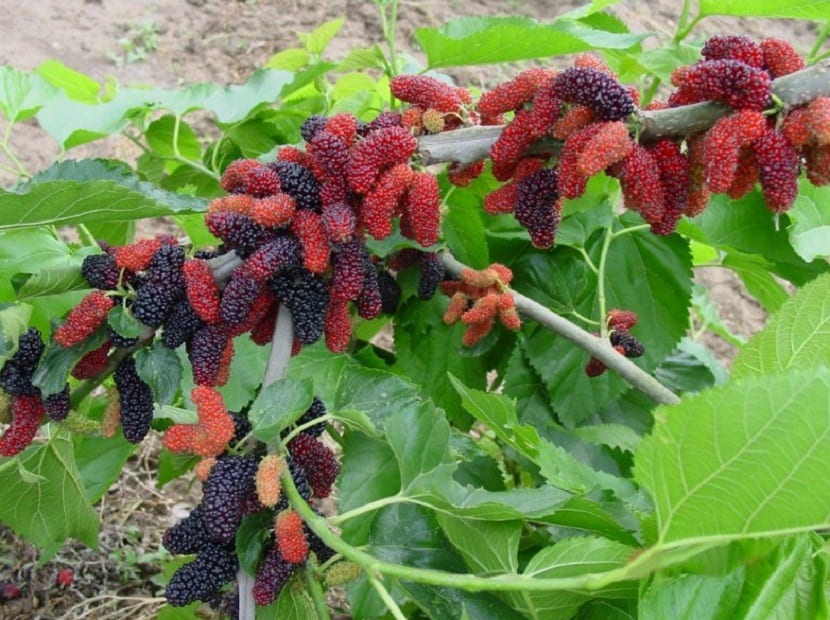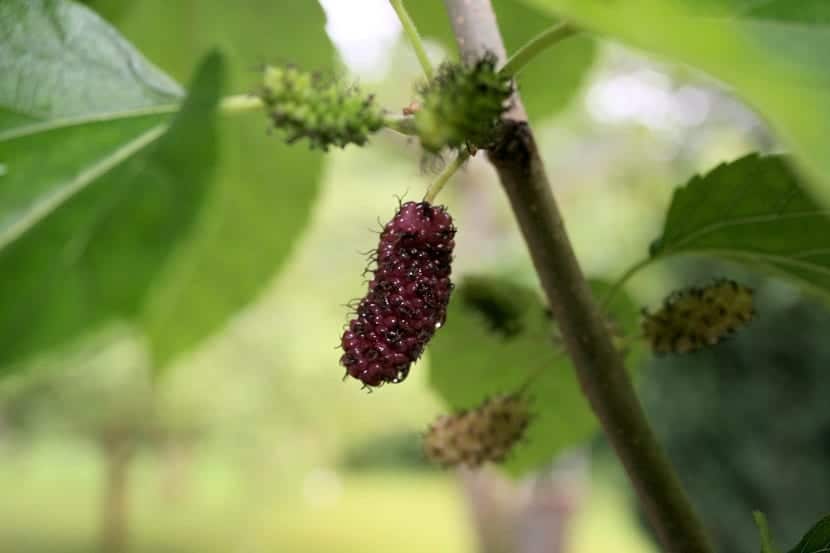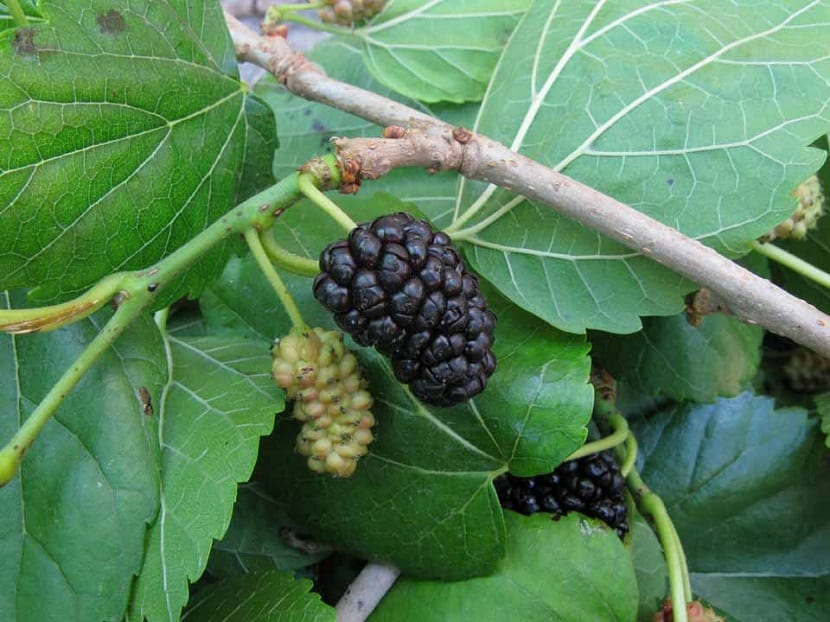
Ulmus rubra It is a tree belonging to the Moraceae family, commonly known by the name of red mulberry. It is a medium-sized species that can reach 18 meters in height., stands out for its abundant foliage, milky sap, reddish-brown bark and above all, for its appetizing fruit and the trees are monoecious or dioecious.
Origin and habitat

El Ulmus rubra belongs to the genus Morus is native to North America, where it can be seen scattered in the wild from Massachusetts, southern Ontario and Minnesota, further south it grows in Florida, Texas and Dakota and in where its natural habitat is thick forests, lowland and wood margins. They can sometimes be seen in urban parks and gardens.

Characteristics of the Morus rubra
Is a tree 9 to 18 meters highIt has a vigorous trunk almost 1 meter wide with a quite branched crown. At maturity, the bark has a greyish brown or reddish color, where you can see a series of irregular strips delineated one from another by not very pronounced grooves and their similar colored ramifications are smooth. The youngest trees are green in color, they can be glabrous or pubescent.
Its abundant leaves alternate on branches and shoots. Like the buds contain a milky sap. Its measurements are 7 to 15 cm long and 5 to 10 cm wide. The upper of the leaves is dark green and commonly has a rough surface full of tiny hairs, while the underside of the leaf is lighter green.
Alternate leaves occur abundantly along the branches and shoots; the sap is present in leaves and shoots. At the base of the leaf there is a central vein and two lateral veins also protruding like the first. The adjacent veins are pinnately placed along the central vein of the leaves. The petioles are light green, glabrous and sometimes pubescent.
The flowers of the red mulberry are unisexual, with dioecious male and female flowers, so it is understood that those trees that have only male flowers never bear fruit. Its appetizing fruits are reddish to purple in color, are juicy and have a sweet flavor.
Farming
The red blackberry is a tree that is not usually cultivated, but if you want to do it, it is preferable if you grow it in full sun and in moist soil. It is a species that tolerates various types of soil and a variety of soil pH. It is a robust plant that grows and develops quickly. To enjoy its fruits, you must wait at least 10 years, it can reach a longevity of up to 125 years.
You can plant its seeds in the open in the fall season. If you want, you can use the cold layering technique, keeping the seeds at a suitable temperature for 30 to 90 days, to later plant in spring.
Uses

It can be used for ornamental purposes due to its attractive leaves and fruits. Its ripe fruits can be eaten directly from the tree, the not yet ripe can be toxic. They are also used to make wines, cakes, jellies, and jams.
The natives of the United States of North America gave it some medicinal uses as an anthelmintic, depurative, emetic, and to treat dysentery. It is also used in the installation of fence posts, furniture making and interior finishes. The bark of the young shoots is used for weaving.
Diseases and pests
El Ulmus rubra It is prone to attacks by various types of pests, so it is important to be attentive to any sign that may be a cause for alarm, such as borers that attack the stem, the White fly that feeds on the leaves, the bacterial blight that attacks and kills the tree's foliage, anthracnose or fungal canker.
Powdery mildew also produced by a fungus and is characterized by the appearance of a white powder on stems and leaves. This plant can also be attacked by pests such as scales, mites and bed bugs. Excess moisture can lead to root rot.